XU1 XSG-100U Handleiding
Bekijk gratis de handleiding van XU1 XSG-100U (2 pagina’s), behorend tot de categorie Verfspuit. Deze gids werd als nuttig beoordeeld door 33 mensen en kreeg gemiddeld 4.3 sterren uit 17 reviews. Heb je een vraag over XU1 XSG-100U of wil je andere gebruikers van dit product iets vragen? Stel een vraag
Pagina 1/2

SAFETY
INSTRUCTIONS
ALWAYS WEAR EYE, FACE
AND EAR PROTECTION
When operating the tool
Electrical safety
Using an extension lead
Spray Gun Safety Warnings
Check that the switch is in the “OFF” position before
connecting to the power supply. Switch to “OFF”
immediately after completion of the task.
Keep the mains cable away from any moving parts or
accessories.
Never cover the ventilation slots in the tool.
Always use an approved extension lead suitable for
the power input of this tool. Before use, inspect the
extension lead for signs of damage, wear and ageing.
Replace the extension lead if damaged or defective.
When using an extension lead on a reel, always
unwind the lead completely. Use of an extension lead
not suitable for the power input of the tool or which is
damaged or defective may result in a risk of re and
electric shock.
The power supply for this product should be protected
by a residual current device (rated at 30mA or less).
A residual current device reduces the risk of electric
shock.
If the supply cord is damaged, it must be replaced
by the manufacturer, its service agent or similarly
qualied persons in order to avoid a hazard.
Original Instructions
XSG-100U
60W
Spray Gun
• Always disconnect the mains plug before doing any work
on the equipment.
• You may only spray materials such as paint, lacquer,
varnish, etc. which have a ash point above 55°C, without
additional heating. (Hazard Class A II or A III, refer to
material tin)
• Be aware of the hazards associated with the material you
are spraying. Read the hazard information on the tin or the
information provided by the manufacturer.
• Follow the manufacturer‘s safety precautions when
working with the material you are spraying.
• Do not spray any materials if you do not know how
hazardous they are.
• Use personal protective equipment (face mask) which
lters the air to avoid inhalation of spray mist.
• Wear gloves and protective clothing to avoid skin contact
with the paint.
• Wear suitable eye protection (goggles).
• The work area must exceed 30m
3
, and sufcient ventilation
must be ensured during spraying and drying.
• Be aware that paint and lacquer can be highly inammable
and potentially explosive. There must be no ignition
sources such as replaces, open ames, buring cigarettes
or machines that generate sparks.
• The paint spray gun may not be used in premises were the
explosion protection directive applies.
• When you are spraying, there must be no ignition sources
nearby such as open ames, cigarette smoking, sparks,
hot glowing wires, hot surfaces, etc.
• The paint spray gun must not be used to spray ammable
substances.
• Flammable solvents must not be used to clean the paint
spray gun.
• INJURY RISK! Never point the paint spray gun at yourself,
other people or animals.
• Properly dispose of residual paint and cleaning agents in
accordance with local laws and regulations.
• Residual paint must be taken to a suitable collection point.
If you are not sure, ask the local council where the nearest
collection point is.
• When you are working with the paint spray gun indoors or
outdoors, the gun must not suck in any solvent fumes.
• When you are working outdoors, pay attention to the wind
direction. The wind can distribute the material over long
distances and cause damage.
• Do not allow children to handle the gun.
• Never open the gun to carry out electrical repairs.
• Spraying into the skin can introduce toxins into the body.
Call a doctor immediately if the jet causes a skin injury or
penetrates the skin.
• Children are not allowed to use this equipment. Children
should be supervised so that they do not play with the
equipment. Children are not allowed to carry out cleaning
or maintenance.
• This equipment must not be used by persons with reduced
physical, sensory or mental capacities or those with a lack
of experience and knowledge.
Materials to be used:
1. Paints and varnishes containing solvents, acrylic
enamel paints, water-soluble varnishes, glazes,
polishes, wood preservatives, disinfectants, plant
protectives, saturants, as well as oils and other watery
liquids.
The following spray substances are not
suitable for use:
Dispersion and latex paints, materials containing
strong abrasives, glazes with coarse particles,
strippers and caustic solutions, silicate paints.
Use of these spray materials can lead to increased
wear or corrosion damage in the pump area.
21
700ml700ml
600600
500500
400400
300300
200200
100100
Dong/Product-Management
Weichselgartner/General-Manager
explains the following conformity according to EU directives and norms for
the following product
Spray Gun XSG-100U (XU1)
2014/29/EU
2005/32/EC_2009/125/EC
2014/35/EU
2006/28/EC
X
2014/30/EU
2014/32/EU
2014/53/EC
2014/68/EU
90/396/EC_2009/142/EC
89/686/EC_96/58/EC
X
2011/65/EU
X
2006/42/EC
Annex IV
Notied Body:
Notied Body No.:
Reg. No.:
2000/14/EC_2005/88/EC
Annex V
Annex VI
Noise: measured L
WA
= dB (A); guaranteed L
WA
= dB (A)
P = KW; L/Ø = cm
Notied Body:
2012/46/EU
Emission No.:
Standard references: EN 60745-1; EN 50580; EN 62321;
EN 55014-1; EN 55014-2; EN 61000-3-2; EN 61000-3-3
Landau/Isar, den 01.08.2017
First CE: 17 Archive-File/Record: NAPR017202
Art.-No.: 30.001.62 I.-No.: 11017 Documents registrar: R. Gehard
Subject to change without notice Wiesenweg 22, D-94405 Landau/Isar
ISC GmbH · Eschenstraße 6 · D-94405 Landau/Isar
3000162_11017_XSG-100U.indd 135 01.09.2017 08:48:41
XU1 Power tools
XSG-100U 0917
Telephone: GB: 0151 294 4488 / IRL: 1850 882711
This tool is double insulated; therefore no
earth wire is required.
Before you connect the charger to the mains supply
make sure that the data on the rating plate are identical
to the mains data.
Description of symbols
Wear eye protection
Double insulated (Protection Class II)
Note! Disassemble and clean the equipment
immediately after each use. This is the only way to
keep the wetted parts clean and prevent clogging. Parts
that are not cleaned can become clogged, causing an
equipment fault.
Caution! Wear gloves.
Danger! - Read the operating instructions to
reduce the risk of inquiry
Caution! Wear ear-muffs. The impact of noise
can cause damage to hearing.
Caution! Wear a breathing mask. Dust which
is injurious to health can be generated when
working on wood and other materials. Never use
the device to work on any materials containing
asbestos!
General Power Tool Safety
Warnings
WARNING! Read all safety
warnings and all instructions. Failure
to follow the warnings and instructions may
result in electric shock, re and/or serious
injury.
Save all warnings and instructions
for future reference. The term “power
tool” in all of the warnings refers to your
mains-operated (corded) power tool or battery-
operated (cordless) power tool.
1. Work area safety
a. Keep work area clean and well lit. Cluttered or
dark areas invite accidents.
b. Do not operate power tools in explosive
atmospheres, such as in the presence of
ammable liquids, gases or dust. Power tools
create sparks which may ignite the dust or fumes.
c. Keep children and bystanders away while
operating a power tool. Distractions can cause you
to lose control.
2. Electrical safety
a. Power tool plugs must match the outlet.
Never modify the plug in any way. Do
not use any adapter plugs with earthed
(grounded) power tools. Unmodied plugs and
matching outlets will reduce risk of electric shock.
b. Avoid body contact with earthed or
grounded surfaces, such as pipes,
radiators, ranges and refrigerators. There is
an increased risk of electric shock if your body is earthed
or grounded.
c. Do not expose power tools to rain or wet
conditions. Water entering a power tool will increase
the risk of electric shock.
d. Do not abuse the cord. Never use the cord
for carrying, pulling or unplugging the
power tool. Keep cord away from heat, oil,
sharp edges or moving parts. Damaged or
entangled cords increase the risk of electric shock.
e. When operating a power tool outdoors, use
an extension cord suitable for outdoor use.
Use of a cord suitable for outdoor use reduces the risk of
electric shock.
f. If operating a power tool in a damp location
is unavoidable, use a residual current
device (RCD) protected supply. Use of an RCD
reduces the risk of electric shock.
3. Personal safety
a. Stay alert, watch what you are doing and
use common sense when operating a power
tool. Do not use a power tool while you
are tired or under the inuence of drugs,
alcohol or medication. A moment of inattention
while operating power tools may result in serious
personal injury.
b. Use personal protective equipment. Always
wear eye protection. Protective equipment such as
dust mask, non-skid safety shoes, hard hat, or hearing
protection used for appropriate conditions will reduce
personal injuries.
c. Prevent unintentional starting. Ensure
the switch is in the off-position before
connecting to power source and/or battery
pack, picking up or carrying the tool. Carrying
power tools with your nger on the switch or energising
power tools that have the switch on invites accidents.
d. Remove any adjusting key or wrench before
turning the power tool on. A wrench or a key left
attached to a rotating part of the power tool may result in
personal injury.
e. Do not overreach. Keep proper footing and
balance at all times. This enables better control of
the power tool in unexpected situations.
f. Dress properly. Do not wear loose clothing
or jewellery. Keep your hair, clothing and
gloves away from moving parts. Loose clothes,
jewellery or long hair can be caught in moving parts.
g. If devices are provided for the connection
of dust extraction and collection facilities,
ensure these are connected and properly
used. Use of dust collection can reduce dust-related
hazards.
h) Do not let familiarity gained from
frequent use of tools allow you to become
complacent and ignore tool safety
principles. A careless action can cause severe injury
within a fraction of a second.
4. Power tool use and care
a. Do not force the power tool. Use the correct
power tool for your application. The correct
power tool will do the job better and safer at the rate for
which it was designed.
b. Do not use the power tool if the switch does
not turn it on and off. Any power tool that cannot
be controlled with the switch is dangerous and must be
repaired.
c. Disconnect the plug from the power
source and/or remove the battery pack,
if detachable, from the power tool before
making any adjustments, changing
accessories, or storing power tools. Such
preventive safety measures reduce the risk of starting the
power tool accidentally.
d. Store idle power tools out of the reach
of children and do not allow persons
unfamiliar with the power tool or these
instructions to operate the power tool. Power
tools are dangerous in the hands of untrained users.
e. Maintain power tools and accessories.
Check for misalignment or binding of
moving parts, breakage of parts and any
other condition that may affect the power
tool’s operation. If damaged, have the
power tool repaired before use. Many accidents
are caused by poorly maintained power tools.
f. Keep cutting tools sharp and clean. Properly
maintained cutting tools with sharp cutting edges are less
likely to bind and are easier to control.
g. Use the power tool, accessories and
tool bits etc. in accordance with these
instructions, taking into account the
working conditions and the work to be
performed. Use of the power tool for operations
different from those intended could result in a hazardous
situation.
h) Keep handles and grasping surfaces dry,
clean and free from oil and grease. Slippery
handles and grasping surfaces do not allow for safe
handling and control of the tool in unexpected situations.
5. Service
a. Have your power tool serviced by a
qualied repair person using only identical
replacement parts. This will ensure that the safety
of the power tool is maintained.
SOUND AND VIBRATION
Danger!
Sound and vibration
Sound and vibration values were measured in
accordance with EN 60745.
L
pA
Sound Pressure Level: 87.0dB(A)
K
pA
Uncertainty: 3 dB
L
WA
Sound Power Level: 10.0dB(A)
K
WA
Uncertainty: 3 dB
Wear ear-muffs.
The impact of noise can cause damage to hearing.
Total vibration values (vector sum of three directions)
determined in accordance with EN 60745.
Vibration Emission Value a
h
: 3.61m/s²
K Uncertainty: 1.5m/s²
The specied vibration value was established in
accordance with a standardized testing method. It
may change according to how the electric equipment
is used and may exceed the specied value in
exceptional circumstances.
The specied vibration value can be used to compare
the equipment with other electric power tools.
The specied vibration value can be used for initial
assessment of a harmful effect.
Keep the noise emissions and vibrations
to a minimum.
•
Only use appliances which are in perfect working
order.
•
Service and clean the appliance regularly.
•
Adapt your working style to suit the appliance.
•
Do not overload the appliance.
•
Have the appliance serviced whenever necessary.
•
Switch the appliance off when it is not in use.
•
Wear protective gloves.
SERVICE INFORMATION
Please note that the following parts of this product are subject
to normal or natural wear and that the following parts are
therefore also required for use as consumables.
* Not necessarily included in the scope of delivery!
Category Example
Wear parts*
Consumables* Nozzle
Missing parts
For EU countries only
Never place any electric power tools in your household
refuse.
To comply with European Directive 2012/19/EC concerning
old electric and electronic equipment and its implementation
in national laws, old electric power tools have to be separated
from other waste and disposed of in an environment-friendly
fashion, e.g. by taking to a recycling depot.
Recycling alternative to the return request:
As an alternative to returning the equipment to the
manufacturer, the owner of the electrical equipment must
make sure that the equipment is properly disposed of if p1-he
no longer wants to keep the equipment. The old equipment
can be returned to a suitable collection point that will dispose
of the equipment in accordance with the national recycling
and waste disposal regulations. This does not apply to any
accessories or aids without electrical components supplied
with the old equipment.
Subject to technical changes
MAINTENANCE
CLEANING
Caution: The spray gun must not be cleaned by using
ammable liquids with a ash point of less than 21ºC.
After every use it is essential that you clean the gun
thoroughly. This will prevent any blockages occurring
and provide constant performance when you next come
to use it.
When you have nished using the gun, empty any
remaining liquid out of the paint pot. Rinse the pot with
paint thinners and spray through the gun onto cardboard
or newspaper.
Remove the paint pot and suction tube, nozzle and
valve (the spring and piston will be attached to the
cylinder). Lubricate the cylinder, piston, valve and
suction tube with drops of a low-viscosity oil.
Assemble the parts back on the gun and briey switch
on (1-2 secs) to disperse the oil around the piston and
cylinder. This practise will help prevent corrosion and
keep parts lubricated for next use.
• If the housing of the gun requires cleaning dip a
cloth in the paint thinners, ensuring the cloth is not
dripping, wipe the exterior of the spray gun.
• Please be aware that certain parts of this spray gun
will wear, eventually requiring replacement and that
these parts are not covered by warranty. These parts
include the atomiser valve, spray nozzles, piston and
spring.
• Prior to storing the spray gun, ensure that it is
completely dry. This will minimise residue build-up for
the next use.
Note: XU1 will not be responsible for any damage
or injuries caused by the repair of the tool by an
unauthorised person or by mishandling of the tool.
WARNING! Ensure the tool is
disconnected from the power supply before
performing any of the following operations.

700ml700ml
600600
500500
400400
300300
200200
100100
Input Voltage: 230-240V~50Hz
Maximum Output: 60W
Flow Rate (Water): 220ml/min
Max. Working Pressure: 130bar
Max. Viscosity: 30DIN-s
Nozzle Size: 0.8mm
Container Volume: 700ml
Protection Class: II
Weight (Tool Only): 1.11kg
3
4
5 821
6
7
700ml700ml
600
600
500
500
400
400
300
300
200
200
100
100
700ml700ml
600
600
500
500
400
400
300
300
200
200
100
100
700ml700ml
600600
500500
400400
300300
200200
100100
A
D
C
F
B
E
1 Cleaning Needle
2 Viscosity Measuring Cup
3 Nozzle
4 Main Housing
5 Paint Pot
6 Flow Regulating Knob
7 On/Off Trigger
8 Power Cord
SPECIFICATIONS USING YOUR
SPRAY GUN
PREPARATION
OPERATION
Filling the Paint Pot
Unscrew the paint pot from the spray gun. FIG B
While lling the pot with paint, lter the paint through a
piece of nylon stocking or a funnel which incorporates a
lter to remove any lumps or particles.
DO NOT OVERFILL. Fill up to the 700ml marking on
the paint pot. Carefully screw the paint pot into the spray
gun ensuring it is secure.
Switching On and Off
To turn on, squeeze the on/off trigger. FIG C
To turn off, release the on/off trigger.
Regulating the Spray Pattern
Before you start spraying, connect the unit to a power
source and turn the regulating knob counter-clockwise
to its maximum position. FIG D
Aim the spray gun at a scrap piece of material or
cardboard and squeeze the on/off trigger. Wait for the
unit to start spraying, then turn the regulating knob
clockwise until the best spray pattern is reached.
Rotating the regulating knob counterclockwise increases
the output spray pattern.
A good spray pattern is achieved with a ne spray
throughout the pattern. If you cannot obtain a good
spray pattern then the paint being sprayed probably still
requires further thinning.
Spraying Technique
Note: Do not operate the spray gun without any liquid
in the pot otherwise the pump will sustain excessive
wear and will void the warranty.
The spraying result depends considerably on how
smooth and clean the surface is, before spraying has
begun. For this reason the surface should be carefully
prepared and kept free of dust. Surfaces and parts not
to be sprayed should be masked by covering with sticky
tape and newspaper. It is advisable to carry out a trial
spraying onto cardboard or a similar surface to nd the
most suitable spray gun adjustments.
Note: Start spraying outside the surface to be sprayed
and avoid stopping in the middle of the surface being
sprayed.
1. To obtain the best results always keep the spray
gun upright to prevent air from being sucked into the
pump, which would result in an uneven spray.
2. Work from side to side keeping the spray gun at an
even distance from the workpiece. The right distance
will varying depending on the type of paint being
sprayed, 20cm is suggested to start with and adjust if
necessary. FIG E
3. The movement of the spray gun should be by the
arm rather than the wrist to ensure that the space
between the spray gun and surface remains the
same throughout the operation. FIG F
Uneven movement of the spray gun will produce an
uneven nish.
4. Do not tip the spray gun more than a 45° angle.
Material could ow into the motor housing and
damage the sprayer. Always rell the paint pot before
the paint level becomes lower than the pump intake.
Helpful Hints
• Do not spray outdoors on a windy day as the results
may be unsatisfactory.
• Evenly control the speed of movement of the spray
gun. A fast speed will give a thin coat and a slow
speed will give a heavy coat.
• Only apply one coat at a time. If a further coat is
required follow the paint manufacturers instructions
for re-coating and drying times.
• If spraying small areas or objects keep the output
setting low as this will avoid excessive use of paint
and will minimise overspray.
• When spraying large areas or objects, it is best to
use a crisscross pattern, either from left to right then
up or down or vice-versa. This will ensure maximum
coverage.
• Avoid stopping and starting when spraying as this
can lead to too much or not enough paint on a
surface.
• To ensure edges are covered, commence spraying
just to the side of an area being sprayed, continue
and do not stop until the spray has gone past the
opposite edge.
Thinning
Caution: The spray gun is to be used only for paints
and solvents with a 21ºC ashpoint or higher.
Thinning is particularly important when spraying. Most
paints are supplied ready for brush application and need
to be diluted sufciently for spraying purposes.
Follow the manufacturers guide for thinning in
conjunction with a spray gun. If in doubt please consult
the manufacturer of the paint. The viscosity cup supplied
will help you determine the correct thickness of the
paint. As some paints, wood preservatives and other
sprayable materials contain particles and have different
qualities, please ensure that when lling the paint pot
on your spray gun, the paint is ltered through either
a funnel with a lter on it, or through nylon tights or
stockings. This will ensure no large particles enter the
paint pot, therefore preventing blockages and providing
you with trouble free spraying.
Ensure that a face mask, gloves, goggles and ear
protectors are worn at all times when spraying.
Floetrol® is an acrylic paint conditioner that you can add
to the paint pot which is for easy, trouble-free spraying.
It helps thin your paint however also reduces wear and
replacement cost of parts within the spray gun. It also
reduces tip clogging avoiding freeze up in the trigger
which gives you a professional nish. Floetrol® is
available from Bunnings Warehouse.
Determining Viscosity
It is vital to determine the viscosity of the coating
material to see if it is suitable to be used in the spray
gun. Using a material that is of too high a viscosity may
result in a chamber blockage which will prevent the
spray gun from working effectively.
To determine the viscosity, the provided viscosity cup
and a timer will be needed.
1. Stir the coating material thoroughly. Then dip the
viscosity cup into the material and submerge to
completely ll the cup.
2. Raise the cup back out of the tin and start timing as
soon as the bottom of the cup is above the surface of
the coating material.
3. Time how long it takes for the cup to empty.
The number of seconds it takes to empty directly
equates to the viscosity; this measurement is referred to
as DIN seconds (DIN-S). FIG A
If the spraying material is determined to be anything
above 30 DIN-S the material will need to be thinned
and tested again until a viscosity of 30 DIN-S or less is
achieved. Refer to the container of the coating material
for the manufactures instructions on how to thin the
material and follow accordingly.
4
WARNING! The power supply for this
product should be protected by a residual
current device (rated at 30mA or less).
WARNING! Ensure the spray gun is
disconnected from the mains power supply
before removing the paint pot.
3 5
WARRANTY
All of our products undergo strict quality checks to ensure that they reach you in perfect condition. In the unlikely
event that your device develops a fault, please contact our service department at the address shown on this
guarantee card. You can also contact us by telephone using the customer service number shown. Please note the
following terms under which guarantee claims can be made:
1. These warranty terms regulate additional warranty services, which the manufacturer mentioned below promises
to buyers of its new products in addition to their statutory guarantee claims are not affected by this guarantee. Our
guarantee is free of charge to you.
2. The warranty services only covers defects due to material or manufacturing faults on a product which you have
bought from the manufacturer mentioned below are limited to either the rectication of said defects on the product
or the replacement of the product, whichever we prefer.
Please note that our devices are not designed for use in commercial, trade or professional applications. A
guarantee contract will not be created if the device has been used by commercial, trade or industrial business or
has been exposed to similar stresses during the guarantee period.
3. The following are not covered by our guarantee:
- Damage to the device caused by a failure to follow the assembly instructions or due to incorrect installation, a
failure to follow the operating instructions (for example connecting it to an incorrect mains voltage or current type)
or a failure to follow the maintenance and safety instructions or by exposing the device to abnormal environmental
conditions or by lack of care and maintenance.
- Damage to the device caused by abuse or incorrect use (for example overloading the device or the use or
unapproved tools or accessories), ingress of foreign bodies into the device (such as sand, stones or dust,
transport damage), the use of force or damage caused by external forces (for example by dropping it).
- Damage to the device or parts of the device caused by normal or natural wear or tear or by normal use of the
device.
4. Your Product is guaranteed for a period of 12 months from the original date of purchase and is intended for
DIY (Do It Yourself) use only. Warranty excludes consumable parts, for example: cutting blade. Guarantee claims
should be submitted before the end of the guarantee period within two weeks of the defect being noticed. No
guarantee claims will be accepted after the end of the guarantee period. The original guarantee period remains
applicable to the device even if repairs are carried out or parts are replaced. In such cases, the work performed or
parts tted will not result in an extension of the guarantee period, and no new guarantee will become active for the
work performed or parts tted. This also applies if an on-site service is used.
IN ORDER TO MAKE A CLAIM UNDER THIS WARRANTY YOU MUST RETURN THE PRODUCT TO THE PLACE
OF PURCHASE WITH YOUR REGISTER RECEIPT.
Please refer to the restrictions of this warranty concerning wearing parts, consumables and missing parts as set
out in the service information in these operating instructions.
CUSTOMER SERVICE HELPLINE
GB: 0151 294 4488
IRL: 1850 882711
XU1
Unit 9 Stadium Court, Wirral International Business Park, Plantation Road, Bromborough, Wirral, CH62 3QG
Items Supplied
Please check that the article is complete as specied in
the scope of delivery. If parts are missing, please contact
our service center or the sales outlet where you made your
purchase at the latest within 5 working days after purchasing
the product and upon presentation of a valid bill of purchase.
Also, refer to the warranty table in the service information at
the end of the operating instructions.
• Open the packaging and take out the equipment with care.
• Remove the packaging material and any packaging and/or
transportation braces (if available).
• Check to see if all items are supplied.
• Inspect the equipment and accessories for transport
damage.
• If possible, please keep the packaging until the end of the
guarantee period.
Danger!
The equipment and packaging material are
not toys. Do not let children play with plastic
bags, foils or small parts. There is a danger of
swallowing or suffocating!
Caution!
Residual risks
Even if you use this electric power tool in
accordance with instructions, certain residual
risks cannot be rules out. The following
hazards may arise in connection with the
equipment’s construction and layout:
1. Lung damage if no suitable protective dust mask is used.
2. Damage to hearing if no suitable ear protection is used.
3. Health damage caused by hand-arm vibrations if the
equipment is used over a prolonged period or is not properly
guided and maintained.
Suitable for spraying paints and lacquers.
The equipment is to be used only for its prescribed purpose.
Any other use is deemed to be a case of misuse. The user
/ operator and not the manufacturer will be liable for any
damage or injuries of any kind caused as a result of this.
Please note that our equipment has not been designed
for use in commercial, trade or industrial applications. Our
warranty will be voided if the machine is used in commercial,
trade or industrial businesses or for equivalent purposes.
Before attempting to operate the machine, familiarise yourself
with the controls and make sure you know how to stop the
machine quickly in an emergency.
Save these instructions and other documents supplied with this
machine for future reference.
Product specificaties
| Merk: | XU1 |
| Categorie: | Verfspuit |
| Model: | XSG-100U |
Heb je hulp nodig?
Als je hulp nodig hebt met XU1 XSG-100U stel dan hieronder een vraag en andere gebruikers zullen je antwoorden
Handleiding Verfspuit XU1

16 Maart 2024
Handleiding Verfspuit
- Meister Craft
- Draper
- Einhell
- Graphite
- Powerplus
- Aqua Joe
- Wagner
- Defort
- Jocca
- Parkside
- Ozito
- Deco
- Cotech
- Daewoo
- Easymaxx
Nieuwste handleidingen voor Verfspuit
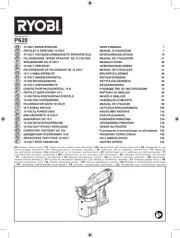
3 September 2025
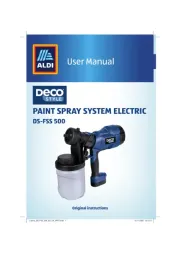
28 Juli 2025
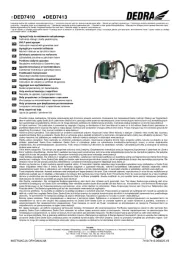
15 Juli 2025
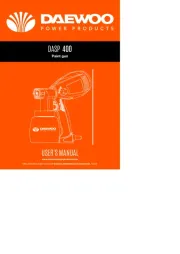
14 Juli 2025
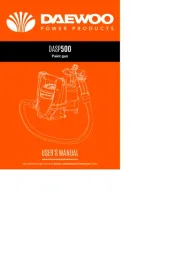
5 Juli 2025

5 Juli 2025
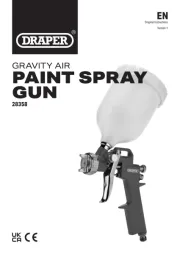
4 Juni 2025
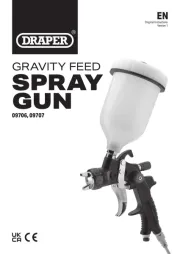
3 Juni 2025
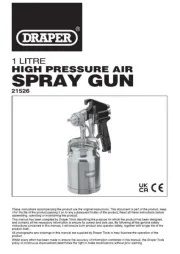
3 Juni 2025
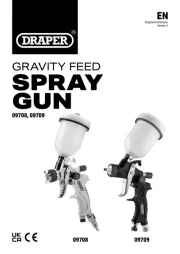
30 Mei 2025